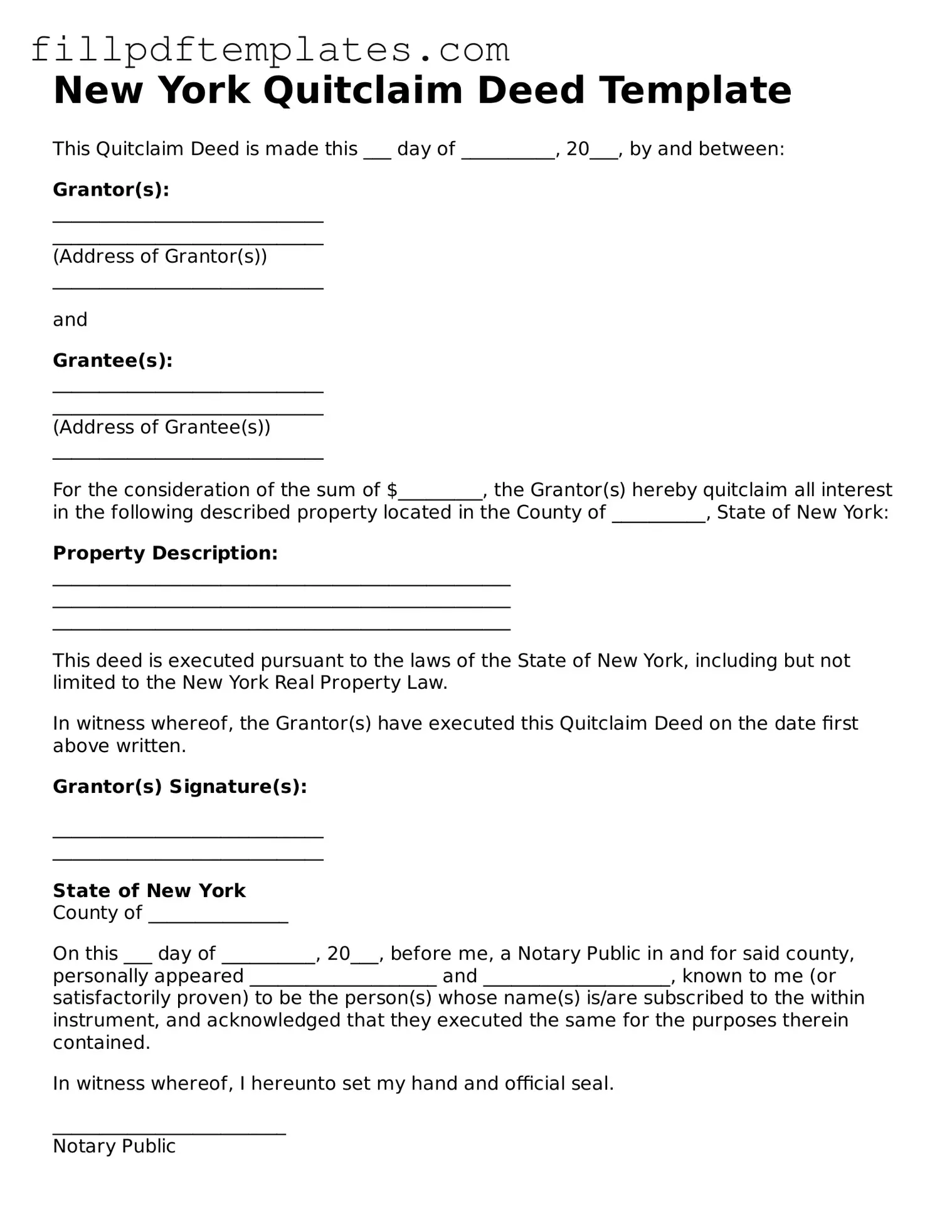New York Quitclaim Deed Template
This Quitclaim Deed is made this ___ day of __________, 20___, by and between:
Grantor(s):
_____________________________
_____________________________
(Address of Grantor(s))
_____________________________
and
Grantee(s):
_____________________________
_____________________________
(Address of Grantee(s))
_____________________________
For the consideration of the sum of $_________, the Grantor(s) hereby quitclaim all interest in the following described property located in the County of __________, State of New York:
Property Description:
_________________________________________________
_________________________________________________
_________________________________________________
This deed is executed pursuant to the laws of the State of New York, including but not limited to the New York Real Property Law.
In witness whereof, the Grantor(s) have executed this Quitclaim Deed on the date first above written.
Grantor(s) Signature(s):
_____________________________
_____________________________
State of New York
County of _______________
On this ___ day of __________, 20___, before me, a Notary Public in and for said county, personally appeared ____________________ and ____________________, known to me (or satisfactorily proven) to be the person(s) whose name(s) is/are subscribed to the within instrument, and acknowledged that they executed the same for the purposes therein contained.
In witness whereof, I hereunto set my hand and official seal.
_________________________
Notary Public
My commission expires: _____________
